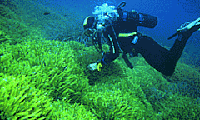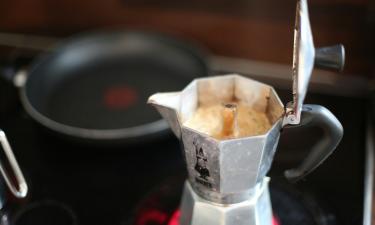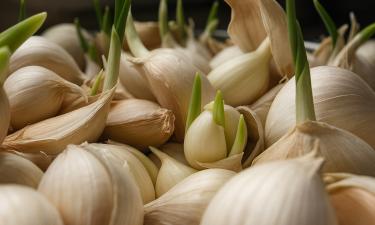Killer algae invade Italy's beaches
Floods, terrorist attacks, hostilities, heat waves have been marring the holiday season on foreign resorts this year. The holiday season is still in full swing and more trouble seems to be in the pipeline. The poisonous algae and jellyfishes have recently played havoc with holidaymakers on one of the popular sea resort of the northwestern coast of Italy.

Despite the sweltering hot weather in the Apennines these days, nobody dares swim in the Ligurian Sea . The Italian newspapers print articles under the headlines that read “Our Seas are Gravely Ill.” The announcements banning swimming were posted by the authorities on the beaches near Genoa and Rome after 10 tourists were taken to hospital. All of them displayed the symptoms of acute toxic poisoning caused by a rare species of algae.
AMI-TASS reports that the harmful marine plant Ostreopsis Ovata, which caused panic on the beaches, is otherwise known as “killer alga.” The plant is very small, and normally occurs in warm tropical seas. It rarely comes to light from the sea depths.
According to ecologists, the high concentration of the above algae in the Mediterranean was caused by this summer’s extremely hot weather in Europe . Meteorologists were putting down record high temperatures throughout July. Europeans still suffer under the broiling sun of August. The sea water temperatures go up to 30 degrees Celsius in some parts of the Mediterranean.
Thousands of fishes in the upper levels of the sea may die due to a massive blossoming and procreation of the poisonous algae. Humans who come into contact with the algae are likely to suffer from diarrhea, develop cough and experience difficulties in breathing. The onset of the disorder is usually accompanied by fever.
The local authorities are taking steps in an attempt to avoid the recurrence of last year’s misfortune when the reputation of the luxurious resorts in the Ligurian Riviera was significantly blemished by a strange epidemic. At least 150 people were admitted to hospitals in the resort area last year in the heat of the tourist season. All of them had similar symptoms including difficulties in breathing, stomach cramps, and a high fever up to 40 degrees Celsius.
Residents of the coastal areas affected by the poisonous algae point out the very muddy seawater observed near the shoreline. Meanwhile, ecologists are taking more water samples in other regions of the coast. The heat wave has been rolling over the Apennine Peninsula for more than a month now, and the signs of the “killer algae” invasion may be found in any of Italy ’s five seas: the Mediterranean, the Adriatic, the Tyrrhenian, the Ligurian, and the Ionian.
Aside from being the dangerous seaweed to touch, Ostreopsis Ovata also excretes toxic matter into the atmosphere, thus harmful vapors are carried across the coast by the wind. Many of those who sought medical help in hospital did not even step into the water, they got the infection while breathing the air on shore.
The reports about the algae trouble on the Italian seaside must be pretty depressing for vacationers and tourists who prefer highly pleasurable and costly European resorts to cheap yet potentially risky holiday tours in Turkey and Egypt.
Pravda.ru
Translated by Guerman Grachev
Discuss this article on Pravda.ru English Forum
Subscribe to Pravda.Ru Telegram channel, Facebook, RSS!





